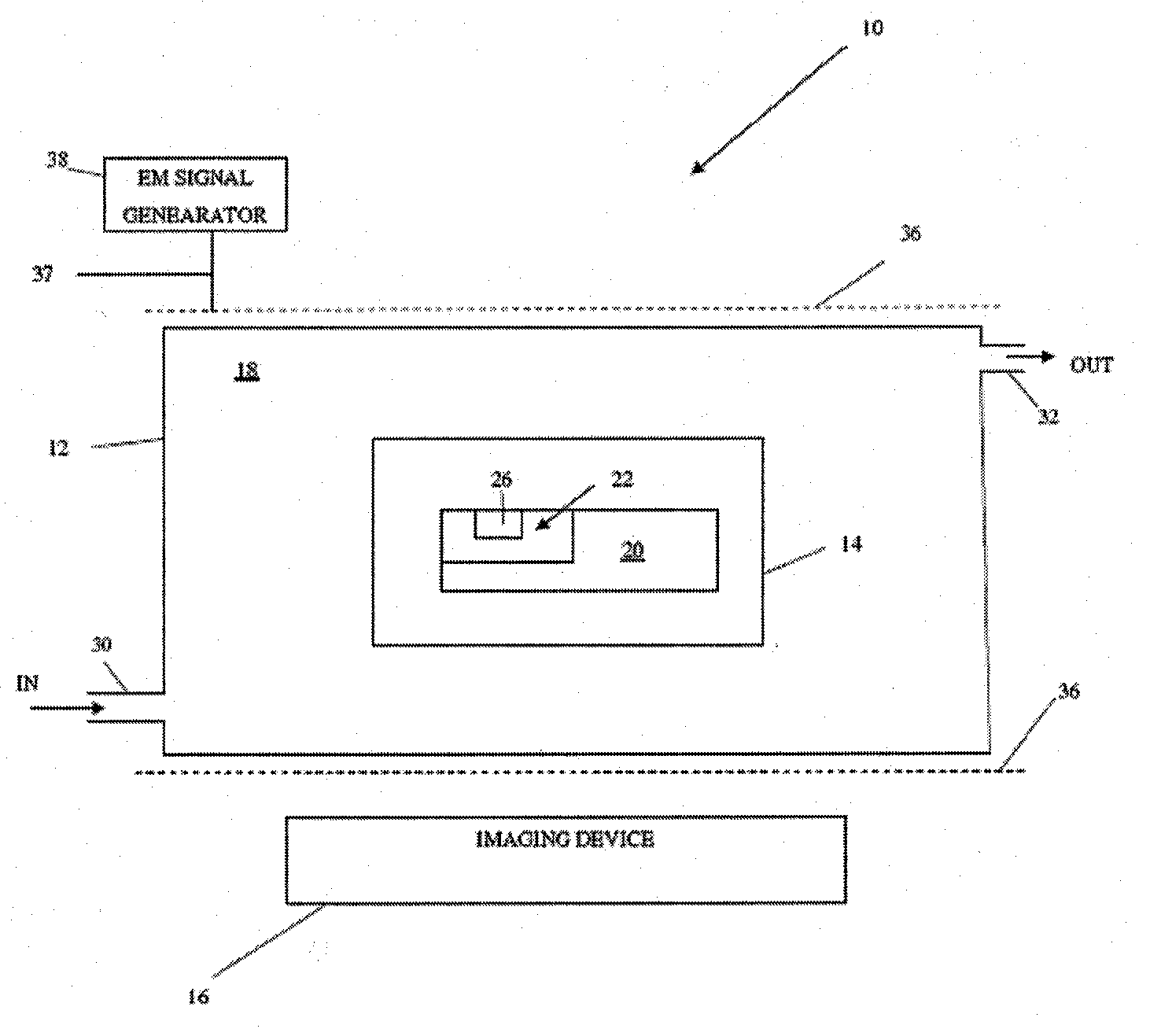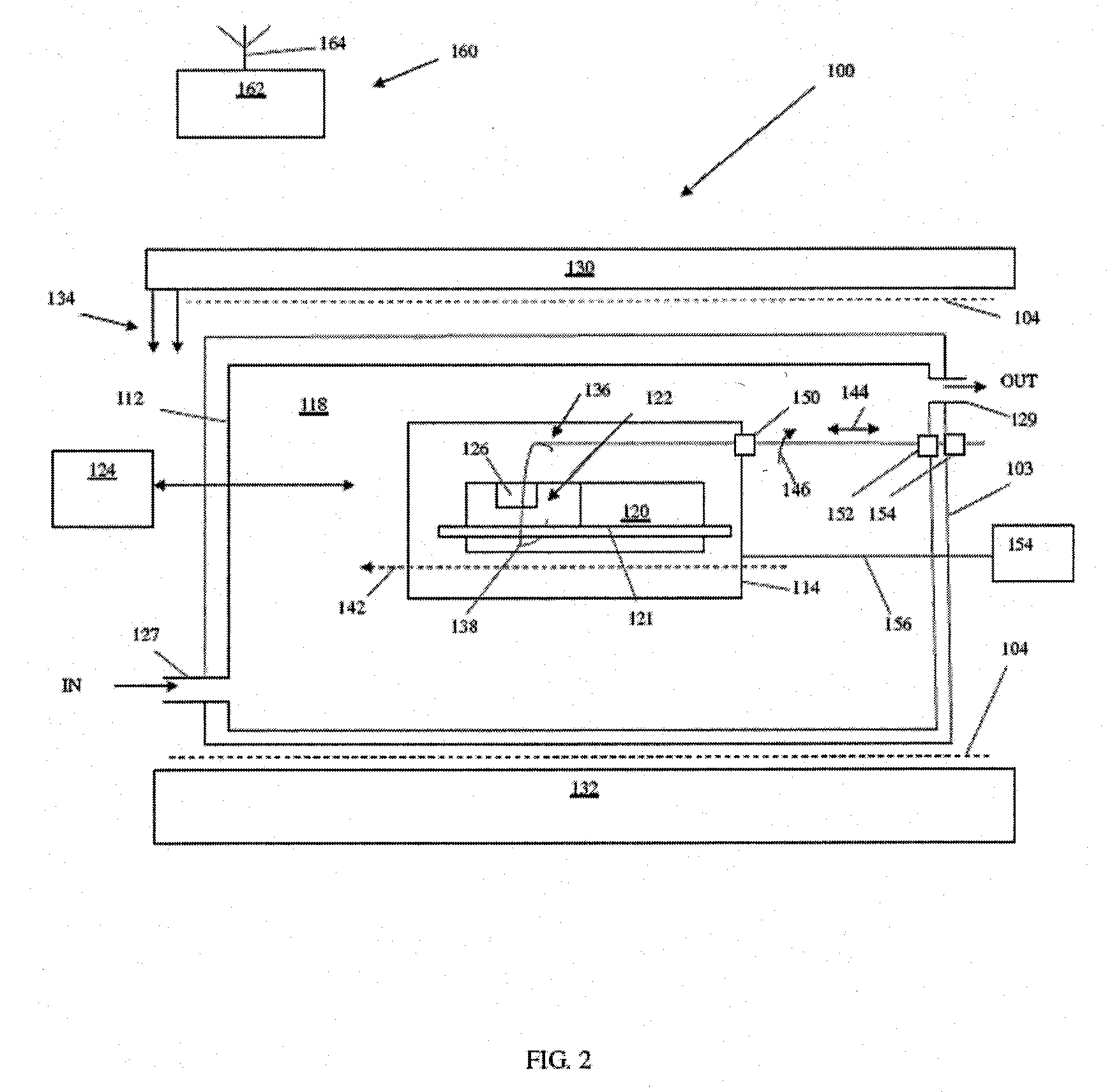System and Method for Generating Invasively Hyperpolarized Images
a hyperpolarized image and system technology, applied in the field of system and method for generating invasively hyperpolarized images, can solve the problems of impeding the medical diagnosis of the patient or the specimen, difficult to detect, and difficult to detect water protons in lipids, etc., to achieve enhanced signal-to-noise ratio, easy to detect, and easy to detect
- Summary
- Abstract
- Description
- Claims
- Application Information
AI Technical Summary
Benefits of technology
Problems solved by technology
Method used
Image
Examples
Embodiment Construction
[0057]Reference is now made to FIG. 1, which shows an indirect-hyperpolarization system 10, in accordance with a preferred embodiment of the present invention. The indirect-hyperpolarization system 10 includes, inter alia, a fluidly-sealable outer chamber 12 encompassing a fluidly-sealable inner chamber 14.
[0058]The outer chamber 12 includes, inter alia, a hyperpolarized medium 18, such as water. The inner chamber 14 is fluidly impermeable from the outer chamber 12, such that the hyperpolarized water 18 is unable to penetrate into the inner chamber 12. The inner chamber 14 is fully immersed within the hyperpolarized water 18, as shown in FIG. 1.
[0059]The inner chamber 14 accommodates a specimen 20. The specimen 20 is fluidly-isolated from the hyperpolarized water 18 and the specimen 20 includes at least one region of interest 22. The at least one region of interest 22 includes, inter alia, at least one unhyperpolarized portion 26, such as body fats, of a plurality of unhyperpolarize...
PUM
 Login to View More
Login to View More Abstract
Description
Claims
Application Information
 Login to View More
Login to View More - R&D
- Intellectual Property
- Life Sciences
- Materials
- Tech Scout
- Unparalleled Data Quality
- Higher Quality Content
- 60% Fewer Hallucinations
Browse by: Latest US Patents, China's latest patents, Technical Efficacy Thesaurus, Application Domain, Technology Topic, Popular Technical Reports.
© 2025 PatSnap. All rights reserved.Legal|Privacy policy|Modern Slavery Act Transparency Statement|Sitemap|About US| Contact US: help@patsnap.com



